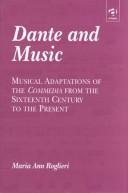| Listing 1 - 10 of 45 | << page >> |
Sort by
|
Book
Year: 2000 Publisher: Paris Ircam L'Harmattan
Abstract | Keywords | Export | Availability | Bookmark
 Loading...
Loading...Choose an application
- Reference Manager
- EndNote
- RefWorks (Direct export to RefWorks)
Book
Year: 1996 Publisher: Sinzig Studio
Abstract | Keywords | Export | Availability | Bookmark
 Loading...
Loading...Choose an application
- Reference Manager
- EndNote
- RefWorks (Direct export to RefWorks)
Book
Publisher: S.l. s.n.
Abstract | Keywords | Export | Availability | Bookmark
 Loading...
Loading...Choose an application
- Reference Manager
- EndNote
- RefWorks (Direct export to RefWorks)
Book
Publisher: S.l. s.n.
Abstract | Keywords | Export | Availability | Bookmark
 Loading...
Loading...Choose an application
- Reference Manager
- EndNote
- RefWorks (Direct export to RefWorks)
Book
ISBN: 9780197600658 9780197600672 0197600697 9780197600696 0197600654 0197600670 9780197600665 0197600662 Year: 2022 Publisher: New York, NY: Oxford University Press,
Abstract | Keywords | Export | Availability | Bookmark
 Loading...
Loading...Choose an application
- Reference Manager
- EndNote
- RefWorks (Direct export to RefWorks)
The book offers an introduction and a guide to three of the principal tasks with which performers of early music engage throughout their professional lives: (1) how to transcribe music from manuscripts and early prints; (2) how to use such historical sources when editing one's own performance material; and (3) how to arrange music for early instruments. Taking its cue from the founding generation of the early music revival, the book highlights ways in which the unprecedented accessibility of sources that musicians enjoy today, and the greater control that musicians now assume over various aspects of music production, may reinvigorate the early music revival and adapt it to a changing artistic world
Book
Year: 2000 Publisher: Paris : Ircam : L'Harmattan,
Abstract | Keywords | Export | Availability | Bookmark
 Loading...
Loading...Choose an application
- Reference Manager
- EndNote
- RefWorks (Direct export to RefWorks)
Book
Year: 1959 Publisher: [Paris Les Belles Lettres]
Abstract | Keywords | Export | Availability | Bookmark
 Loading...
Loading...Choose an application
- Reference Manager
- EndNote
- RefWorks (Direct export to RefWorks)
Book
ISBN: 8322640196 8322640188 Year: 2021 Publisher: Katowice [Poland] : Wydawnictwo Uniwersytetu Śląskiego,
Abstract | Keywords | Export | Availability | Bookmark
 Loading...
Loading...Choose an application
- Reference Manager
- EndNote
- RefWorks (Direct export to RefWorks)
The subject of this monograph is the issue of creative development of a pianist interpretation in chamber music, with the consideration of various transcriptions. In order to fully cover the subject, the author of the paper has tried to systematize the term transcription, as well as presented the pedigree of the selected musical pieces, which are parts of works of art, in the background of chamber musical pieces of their composers: J. Brahms and D. Shostakovich. This monograph also covered the area of knowledge about the relationship between the evolution of chamber music with the accompaniment of piano and the development of the piano sound at the turn of the 18th and 19th centuries.The aspect, which was undertaken in this study - the pianist interpretation in regard to the changing performance medium in the musical piece - was presented on the sample of substantial transcription, using selected elements of the musical work: dynamics, articulation, agogic and some elements of musical expressions.The analysis of the discussed issue was presented on the basis of stylistically diverse musical pieces: Sonata in E-flat major, op. 120 No. 2 for clarinet and piano and its transcription for viola and piano, as well as the transcription for violin and historical piano, and Sonata in D minor op. 40 by D. Shostakovich for cello and piano and its transcription for double bass and piano by James Rapport. Due to the need to show the creative role of the pianist in regard to the performance and sound opportunities of the instruments, which co-interpret the chamber musical piece, selections were made within instrumental duets with the participation of both string and wind instruments. The type of the substantial transcription was used in this work as a means to show the factors contributing to the individualization of the piano playing in chamber music and to present its different face depending on the characteristics of the chosen instrument of the co-interpreter.
Book
Year: 1969 Publisher: Amsterdam : [s.n.],
Abstract | Keywords | Export | Availability | Bookmark
 Loading...
Loading...Choose an application
- Reference Manager
- EndNote
- RefWorks (Direct export to RefWorks)

Abstract | Keywords | Export | Availability | Bookmark
 Loading...
Loading...Choose an application
- Reference Manager
- EndNote
- RefWorks (Direct export to RefWorks)
Dante Alighieri --- Arrangement (Music) --- 78.78
| Listing 1 - 10 of 45 | << page >> |
Sort by
|

 Search
Search Feedback
Feedback About UniCat
About UniCat  Help
Help News
News